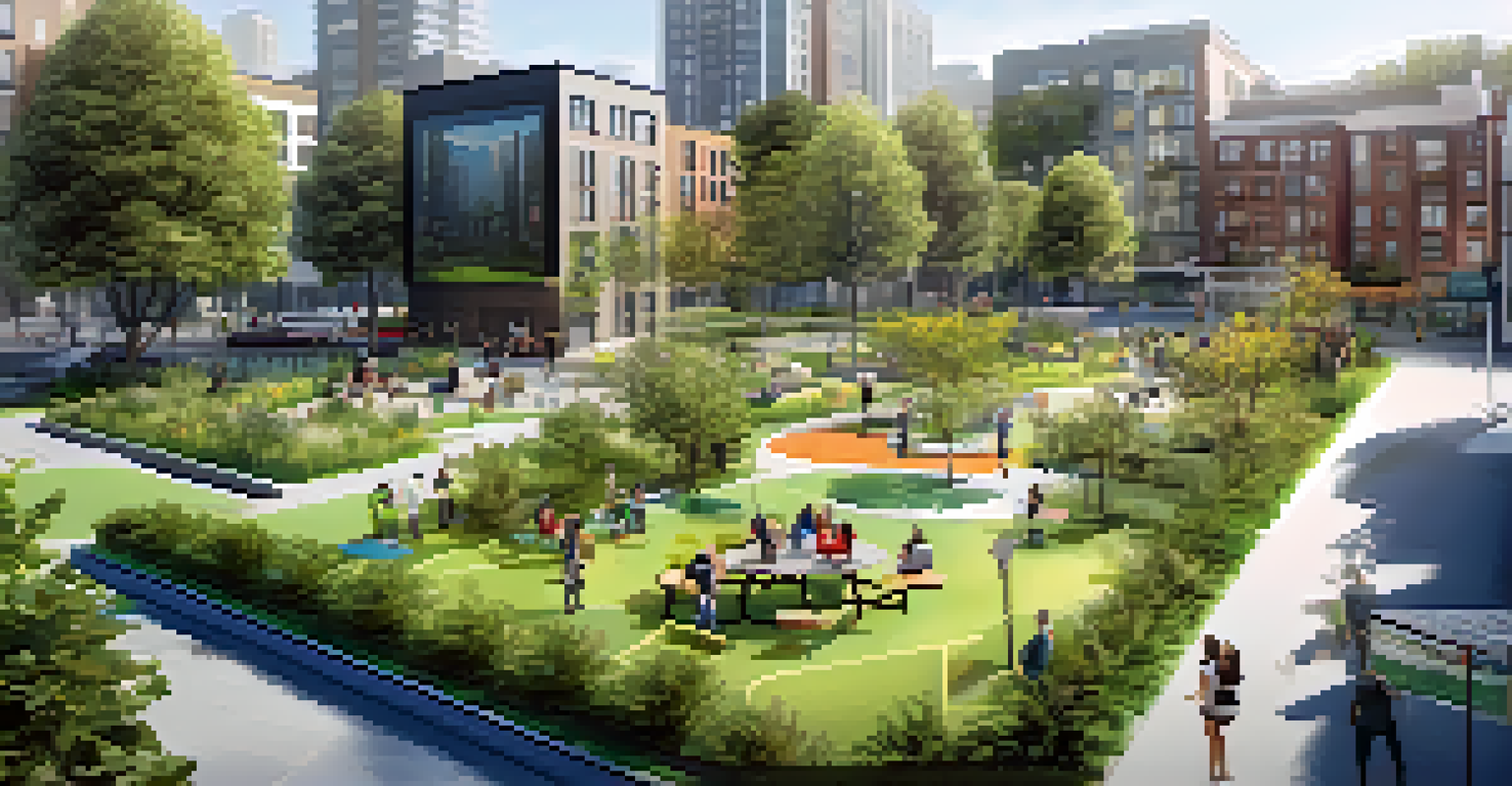Strategies for Effective Public Participation in Urban Planning

Understanding the Importance of Public Participation
Public participation is a cornerstone of successful urban planning. It allows community members to voice their needs and preferences, ensuring that developments reflect the values and aspirations of the residents. When people feel involved, they are more likely to support projects, leading to smoother implementation and greater satisfaction.
Public participation is not just a right but a necessity for effective governance.
Moreover, effective public participation can uncover local knowledge that planners might overlook. Residents often have unique insights about their neighborhoods, which can inform better decision-making. For instance, a local park redesign could benefit from input about how the space is currently used and what improvements would be most appreciated.
Ultimately, fostering a sense of ownership among community members can lead to more sustainable urban environments. When people are actively engaged, they are invested in the outcomes, which encourages ongoing stewardship and care for shared spaces.
Utilizing Technology to Enhance Engagement
Technology plays a transformative role in public participation efforts. Online platforms can broaden outreach, making it easier for residents to engage in discussions about urban planning. For example, interactive maps can allow users to visualize proposed changes in their neighborhoods, sparking conversation and generating feedback.

Social media also serves as a vital tool for communication, helping planners connect with a diverse audience. By sharing updates and soliciting input through platforms like Facebook or Twitter, urban planners can reach people who might not attend traditional meetings. This accessibility is key to inclusivity.
Public Participation Boosts Planning Success
Engaging community members ensures urban developments reflect their needs and fosters a sense of ownership.
Furthermore, digital tools can streamline the feedback process. Surveys and polls can gather opinions quickly, allowing planners to analyze community sentiments efficiently. This data-driven approach can lead to more informed decisions that align with the preferences of the population.
Creating Inclusive Engagement Opportunities
Inclusivity is essential in public participation to ensure that all voices are heard, especially marginalized communities. Planners should strive to create engagement opportunities that accommodate different schedules, languages, and accessibility needs. For instance, hosting meetings at various times and locations can help people who may have conflicting work commitments participate.
Engagement is the bridge between community aspirations and urban reality.
Additionally, employing translation services and providing materials in multiple languages can break down barriers for non-English speakers. When communities see that their unique perspectives are valued, they are more likely to engage in the planning process. This not only enriches discussions but also leads to more equitable outcomes.
Creating a welcoming atmosphere where all community members feel comfortable sharing ideas is also crucial. This might include training facilitators to manage discussions sensitively or holding informal gatherings that encourage relationship-building among participants. Strong connections within the community can enhance trust and collaboration.
Incorporating Feedback into Planning Processes
Gathering feedback is only the first step; the real challenge lies in incorporating that input into planning processes. Planners should demonstrate how community feedback has shaped decisions, which builds trust and encourages ongoing participation. For example, if residents suggest adding more green spaces and their recommendations are reflected in the final designs, it reinforces the value of their contributions.
A feedback loop, where communities can see the results of their input, is vital for sustaining engagement. Planners can utilize newsletters or social media updates to keep residents informed about how their suggestions are being implemented. This transparency fosters a collaborative spirit and motivates more people to share their insights.
Technology Enhances Community Engagement
Digital tools and social media facilitate broader outreach and streamline feedback from residents.
Moreover, planners should be prepared to explain decisions that deviate from community feedback. Providing context about constraints such as budgets or regulations can help residents understand the complexities of urban planning, making them feel more connected to the process.
Leveraging Local Organizations for Outreach
Local organizations can be powerful allies in promoting public participation. These groups often have established trust within communities and can help facilitate discussions, ensuring that diverse voices are included. Partnering with neighborhood associations or advocacy groups can amplify outreach efforts and enhance credibility.
Moreover, organizations can assist in identifying key issues that matter to residents, guiding the focus of engagement efforts. They can also help organize events or workshops that cater to specific community needs, making participation more appealing and relevant. For instance, a local environmental group could host a community cleanup to discuss urban greening initiatives.
Engaging with these organizations not only enriches the public participation process but also strengthens community ties. Together, planners and local groups can work towards shared goals, fostering collaborative relationships that benefit everyone involved.
Adapting to Changing Community Dynamics
Urban areas are constantly evolving, and public participation strategies must adapt accordingly. Planners should remain aware of demographic shifts, economic changes, and cultural trends that impact community needs. This flexibility allows for more relevant and timely engagement efforts, ensuring that all segments of the population are considered.
For example, as neighborhoods gentrify, long-time residents may feel displaced. Engaging these communities in discussions about maintaining affordable housing can lead to more equitable outcomes. Recognizing and addressing these challenges proactively can help foster a sense of belonging and stability.
Inclusivity Strengthens Planning Outcomes
Creating accessible engagement opportunities for diverse communities leads to richer discussions and equitable results.
Additionally, planners should be open to experimenting with new engagement methods as communities evolve. What worked a few years ago might not resonate today, so staying attuned to changing dynamics is essential. This willingness to innovate can lead to more meaningful interactions and a stronger commitment from residents.
Evaluating the Effectiveness of Engagement Strategies
Assessment is a crucial aspect of public participation. Planners should regularly evaluate the effectiveness of their engagement strategies to determine what works and what doesn’t. This can involve collecting feedback from participants about their experiences and suggestions for improvement, ensuring that future efforts are more impactful.
Metrics such as attendance at events, online engagement rates, and the diversity of participants can provide valuable insights. Analyzing this data helps planners understand which strategies resonate with the community and where adjustments are needed. For example, if online surveys yield low participation, it may be worth exploring alternative methods.

Ultimately, an ongoing evaluation process encourages continuous improvement in public participation efforts. By being responsive to community needs and preferences, planners can foster a dynamic planning environment that encourages active involvement and collaboration.